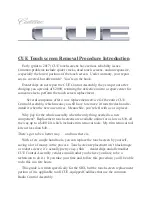
Regulations
TSS – 6720887693 (2018/10)
8
Permissible loads
▶ Only install collectors in locations with values lower than those shown
in the following. If required, consult a structural engineer.
Table 12 Maximum loads for the installation set
(with reference to DIN EN 1991, parts 3 and 4)
When determining the maximum wind speed, take the following factors
into account:
• Location of the thermal solar system
• Geographical height of the terrain
• Topography (terrain/buildings)
• Height of building
The maximum snow load is calculated using regional zones (snow load
zones) and the ground level elevation.
▶ Enquire about the locally applicable snow loads
(
e.g. technical guide).
Permissible roof connections
▶ Collectors: use roof hooks or double-ended screws.
▶ Storage tanks: only double-ended screws are permissible.
▶ Only screw double ended screws into a substructure with sufficient
load bearing capacity.
Corrosion protection
All supplied components are protected against corrosion through either
the material (e.g. aluminium, plastic) or coatings.
▶ Only use materials on site that can withstand local weather
conditions.
The potable water area in the storage tank is protected against corrosion
through enamel coating and a magnesium anode. To maintain this
protection:
▶ Observe the maintenance intervals and instructions in the
"Maintenance, inspection" section.
2.7
Recommendations for energy savings
▶ Install the DHW mixing valve as close as possible to the storage tank
(
section "Hydraulic connection" for system examples).
▶ When using an immersion heater:
– Only connect the immersion heater to the mains power supply
when insufficient solar exposure is expected (e.g. during winter,
at night).
– Disconnect the immersion heater from the mains power supply
when solar exposure is sufficient or during absences (e.g.
holidays).
– Use a timer or similar to ensure appropriate use of the immersion
heater.
– Set the temperature as low as possible.
▶ To be able to use as much solar-heated water as possible, draw hot
water only after the sun has peaked (midday).
▶ Connect dishwashers and washing machines (if suitable) to the DHW
pipe and where possible use these between 15:00 and 18:00.
▶ Position the thermosiphon system so that the DHW pipe is as short as
possible. Ensure the DHW pipe is very well insulated.
2.8
Declaration of conformity (collector)
This product, in design and operation, conforms to the
European Directives and supplementary national
requirements. Compliance is demonstrated by the CE
marking.
You can request the declaration of conformity of the product. For this see
the contact address on the back cover of these instructions.
3
Regulations
▶ Observe updated regulations or supplements. These regulations also
apply at the time of installation.
▶ Observe all standards and guidelines applicable to the installation
and operation of the system in your country and region.
Technical regulations applicable for the installation of collectors
• Rooftop installation:
– DIN EN 1991: Actions on structures
• Connection of thermal solar systems:
– EN 12976: Thermal solar systems and components
(factory-made systems)
– EN 12977: Thermal solar systems and components
(custom-built systems)
• Electrical connection:
– DIN EN 62305 Part 3 / VDE 0185-305-3: Protection against
lightning, physical damage to structures and life hazard
Technical rules for the installation of DHW cylinders
• DIN EN 12897: Water supply – specification for storage water
heaters (product standard)
• DIN EN 1717: Protection against pollution of potable water
installations
• DIN EN 806: Technical rules for potable water installations
4
Before installation
4.1
General notes
CAUTION:
Risk of burning from hot components!
The collector and installation materials can become very hot after being
exposed to solar radiation for prolonged periods of time.
▶ Wear personal protective equipment.
▶ Protect the collector and installation material from solar exposure.
We recommend that you engage the services of a roofing contractor, as
they are experienced in working on roofs and will be aware of the risk of
falling.
▶ Obtain information about on-site conditions and local regulations.
▶ Avoid potential shading.
▶ Whenever possible, align collectors so they are facing the midday
sun.
Load
Roof slope 15-24°
Roof slope 25-45°
Snow load
1)
1) Maximum snow load on the ground according to DIN EN 1991-1-3
--
< 1 kN/m
2
Wind load
2)
2) Maximum wind load according to DIN EN 1991-1-1-4
< 151 km/h (corresponds to a dynamic
pressure of 1.1 kN/m
2
)
Содержание TSS Series
Страница 29: ......
Страница 30: ......
Страница 31: ......
Страница 32: ...Bosch Thermotechnik GmbH Junkersstrasse 20 24 D 73249 Wernau www bosch thermotechnology com ...









































